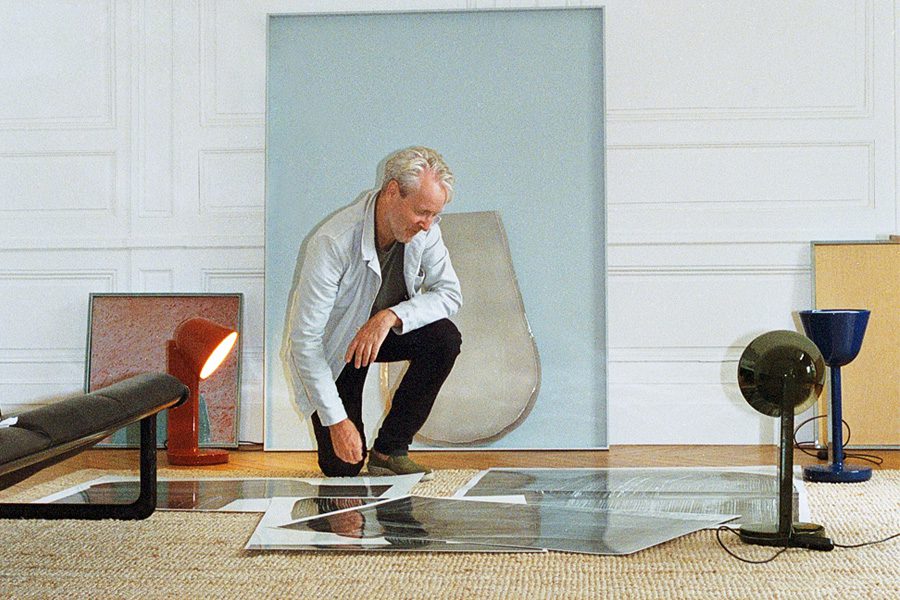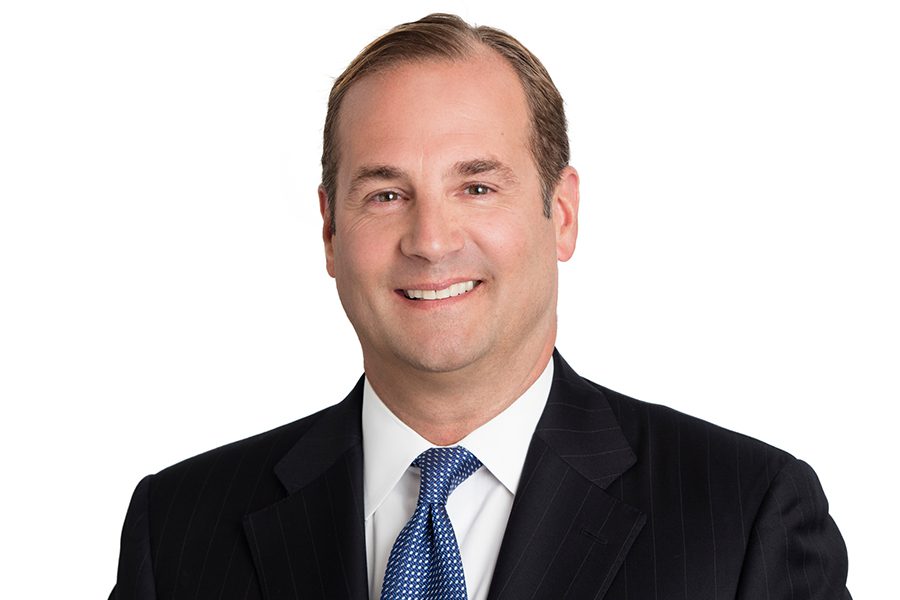HD, along with International Interior Design Association (IIDA) executive vice president and CEO Cheryl Durst, recently hosted four Black women designers—all IIDA members—of various ages, career levels, and design backgrounds, to talk about their experiences in the predominately white industry. The virtual roundtable included Ronnie Belizaire, corporate real estate manager, Americas, Daimler North America Corporation; Tara Headley, interior designer, Hendrick; Krystal Lucero, senior interior designer, Edwards + Mulhausen; and Mavis Wiggins, managing executive, TPG Architecture.
The average designer surveyed in IIDA’s 2019 Interior Design Compensation Report was a college-educated, mid-career white woman. Of the IIDA members who responded, 85 percent were white. By comparison, only 2 percent identified as African American. Additionally, according to IIDA’s Industry Roundtable Report from 2016, 36 percent of newly licensed architects are women, while only 2 percent are Black, making it one of the five least diverse professions.
This discussion, edited for length and clarity, reflects the larger shortcomings of the architecture and design industries, and the long overdue changes that need to be implemented to encourage and empower more people of color to consider design as a career option. What follows is an insightful—often illuminating—conversation about the lack of representation in the industry, the daily microaggressions many people of color face, and what it takes to transform this moment into a movement.
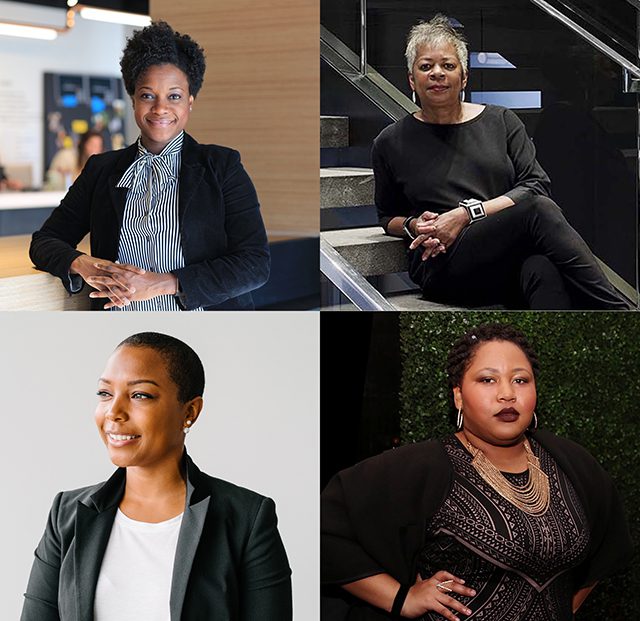
Clockwise from top left: Ronnie Belizaire, Mavis Wiggins, Tara Headley, Krystal Lucero
Cheryl Durst: A lot of organizations are coming out with their statements [in support of Black Lives Matter and against racial injustice]. Words matter, but we need to take those words and move toward action. IIDA doesn’t have a diversity statement, per se, but we do have a definitive policy in our association bylaws that supports diversity and equity in practice—in short, we’re committed to the sustained, intentional, organized dismantling of racism. We all need these very deliberate and intentional words that spur action. We’re committed to dismantling racism in a global sense, but absolutely in the micro sense with what’s right in front of us with our profession.
Ronnie Belizaire: I first was exposed to [IIDA] in college, and attending NeoCon was eye-opening: ‘Wow, here are other Black people going along this same path.’ My graduate student advisor [at Florida State University] connected me with Cheryl. I ended up in her office, and I’m like, ‘She’s a Black woman.’ That was 15 years ago, and it was such an important thing for me to see. Not much has changed since then. [The industry] still looks very much the same. That’s a little disheartening, and I wish it weren’t true.
Mavis Wiggins: My firm is very diverse. We’re about 56 percent women and 40 percent minority. I’m in a partnership there, so I have a lot of room to help influence what happens in that space. It’s funny how you can get to a place where you get comfortable being the only Black person in the room because that’s all we knew. But now things have opened up so much more in our firm that it makes me want to get involved in the industry at large. This is very timely, not only because of all the things we’re going through right now in the world and in the nation, but because it’s overdue.
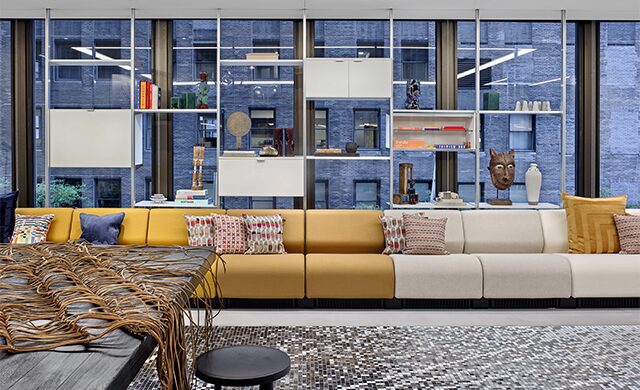
Designed by Gensler, IIDA’s Chicago headquarters features layered furniture with bold moments of color
CD: When Ronnie reached out to me, I made sure I spent time with her. She ultimately became president of our Georgia chapter. Now she’s on our international board of directors. When Tara became our first Student of the Year, she met Krystal. When we hear—whether it’s from a firm or manufacturer—‘I can’t find Black people,’ I always have to call bullshit on that because we are out there. We all need to take the time—Black people included—to encourage, support, elevate, and advance.
Tara Headley: I connected Ronnie with a friend of mine who was feeling down in her architecture firm. She said, ‘I don’t have anyone else here. I feel like the industry is not for me.’ I tried to make that connection for her. But it’s us constantly doing that work. I don’t see a lot of allies and non-people of color doing that extra work to connect the dots and help us. We don’t mind because it’s fulfilling to us, but it’s exhausting. We have a group that was started here in Atlanta of Black women in our industry. We try to get together once a month to [discuss] all the things we have to deal with. But again, we’re putting that together and coming together to find a space for ourselves. We need people to be aware that we need help in making those connections.
Krystal Lucero: We are a women-owned firm, and at the time I joined, I said we were the most diverse firm in Austin because we had one Black woman, and it was me. When I hear Mavis say that her firm is 40 percent [minority], that blows my mind. I fought joining [IIDA] for a long time because I thought it was a sorority that I didn’t belong to. When I met Cheryl in 2016, I [continued with the organization] because I saw leadership that looked like me.
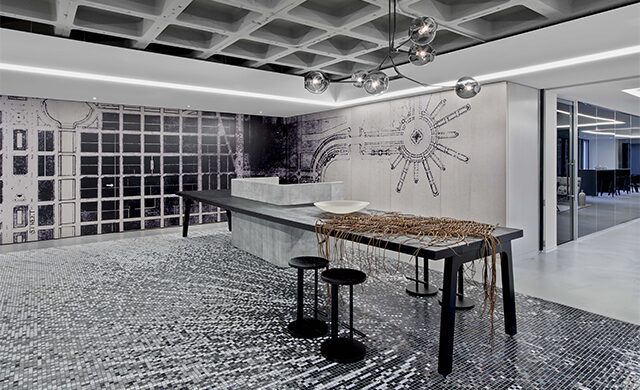
The mosaic-tiled entrance at IIDA boasts a mural depicting the 1909 Plan of Chicago
CD: What you’re hearing is so important whether you’re 6 years old, in school, or starting to think about a career. There is absolutely truth to ‘you need to see it to be it.’ Particularly in this journey we’ve all been on, it’s lonely and isolating. All these women are leaders and it becomes even lonelier as you’re rising through the ranks. You see fewer and fewer women, fewer and fewer Black women, fewer and fewer people of color. It is important for us to ‘see us’ and for white people to see us. Representation matters.
KL: I didn’t realize I needed that. Like everybody says, you want to see somebody who looks like you. I would have never verbally said that and used that terminology, but when I saw it, I knew I wanted it.
CD: Pre-COVID, I had lunch in Chicago with two young women who are starting at large firms. They both have braids. They had reached out to me to ask, ‘Do you think it’s okay for us to wear our hair natural or in braids? We’re afraid because our firms are so white that this would be held against us.’ I was glad they asked, but it broke my heart.
TH: A lot of people outside of the circle, and non-people of color, don’t understand what hair means to us as Black women. I’m from the Caribbean and part of the connection to my culture is that my hair is my crown. It is important to me. One time a coworker came up to me and pulled one of the coils of my hair and said, ‘This is so cool, it looks like Cheetos.’ I had no idea what to do because if I expressed how I felt, it would not have been appropriate for the work environment and so I didn’t do anything. The lack of understanding in general around things that are important to us as a people—as a culture—that needs to be something that’s shared, so people understand what not to do without us having to tell them.
MW: The disheartening thing about all of this is how much energy it takes to always have to explain or doubt whether it’s okay to wear your hair a certain way. We have stressful jobs already. We don’t need all of this extra [weight] put on top of us. That’s why it’s important to have these kinds of dialogues, so you can figure out how to deal with it in a way that doesn’t take so much energy out of what you really need to focus on.
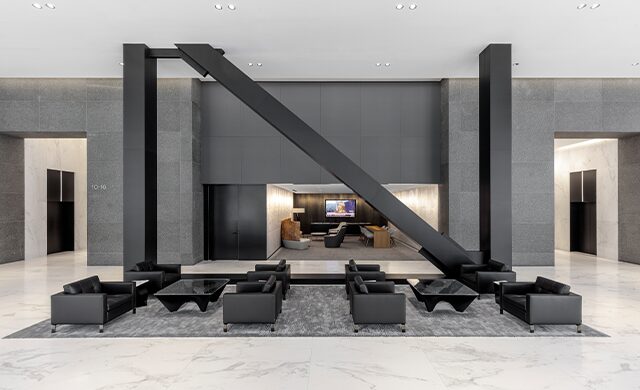
For the lobby of 525 West Van Buren in Chicago, TPG Architecture celebrates the building’s high ceilings with a granite wall backdrop
TH: The conversations happening now are starting to empower a lot of allies to speak up and to go out of their way to learn more. I was at an event where they set up a very racist game as part of an activity. I was one of very few Black people there so I was looking around for anyone else to chime in and say ‘Maybe we shouldn’t do this. This is blatantly racist.’ No one said anything, so I had to be the one to be vocal at the risk of seeming like ‘the angry Black lady with a complaint.’ The conversation about racial sensitivity is at a point where allies can at least spot these kinds of things to know they’re wrong and hopefully speak up on behalf of people of color some of the time.
CD: It’s not a book that’s in every firm of ‘Here are 101 things you need to know about Black people,’ although I would like to write that book. It’s finding a way to get people comfortable with being uncomfortable. Up until this moment we’re in now, a lot of firms were paying lip service. They were checking a box. People understand it needs to be a bit more real now.
RB: Going back to this idea of being that token Black person at any organization, many times, leaders in firms or supposed allies, say, ‘We have a Black person, so we’re good. We fixed the problem. The work is done.’ But how isolated does that one Black person feel? I started my career in a boutique firm of all women, and I was the only person of color. Our small team would always take group photos and create personal holiday cards to send out to our clients. For my third holiday with them, the team voted on creating a retro style image to be captured in sepia tone, which on paper sounds great, but in sepia tone, my dark skin isn’t seen in its best light. I felt comfortable enough to express my concern, but the team proceeded as planned. The images came back, and I am barely recognizable because my skin fades into the brown background. You can see the other women clearly, but [they didn’t pay attention] to the fact that I was barely visible. For something that should be a fun occasion, I felt completely left out.

Undulating wood slats greet guests at the Edwards + Mulhausen-designed American Constructors office in Austin
TH: It’s important to look at diversity beyond race as well. I am a Black woman first, but I’m also from Barbados. I’m an immigrant in America. The conversation for me surrounding diversity is about the topic of my Blackness, the topic of my culture, the topic of my immigration status, which has been a 10-year journey to just get a Green Card. It’s important for firms to know that people who bring points of diversity, outside of being a white man, hold a lot of value. That’s lacking in a lot of these conversations. [Diversity] brings in more revenue, and in general, you have a more well-rounded company just by opening up to different types of people.
MW: You’re collaborating, you bring some new ideas to the table that may not have surfaced before, and you end up with a better product because you have more diverse points of view. A big part of why you’re not seeing so many people of color in the industry is because our parents didn’t want us going in that direction. My parents did not steer me toward design. They didn’t know anything about it. They always thought security was the most important thing, and it had to be a known [profession]. We didn’t have people in my family who were architects or designers. There was nobody to steer me in that direction.
CD: To Mavis’ point, in a lot of immigrant communities and communities of color—and
a lot of it depends on demographics and age— parents want you to go into known careers that signal safety and security. People look at design as a career that is more about luxury than necessity. It also isn’t recognized as a career where you can actually earn a living. We need to be able to have that conversation that design is absolutely that career. [In fact], 70 percent of kids make career decisions by the time they’re 12. To that end, IIDA is preparing to launch a pipeline program [in 2021] specifically for K-6 students that focuses on design and diversity. We’re talking to schools and guidance counselors to help them understand what interior design and architecture are, and why they’re different. It’s about getting to kids when they’re young because regardless of your income level, for children, interior design is very empowering.
One of the key points in diversity for a lot of institutions is rethinking the places where they recruit. Gabrielle Bullock [principal and director of global diversity] changed the focus at Perkins and Will, which now recruits from historically black colleges and universities [HBCUs]. You don’t have to do anything but think differently about the places that you’re going and the folks you’re talking to.

While with Gensler, Belizaire was design manager for the Mercedes-Benz USA headquarters in Sandy Springs, Georgia
RB: Because the firm is diverse, it doesn’t [necessarily] mean that diversity is truly celebrated. That’s why I give Perkins and Will a lot of credit. We know a lot of that effort is because of the work that Gabrielle has done. They started doing that work long before it became popular to do it a month ago.
TH: If you open up recruiting from diverse areas, you create the same level of opportunity for everyone. My knowledge of culture and the world in general is so much wider for having been made aware of these connections and being able to speak to so many different people. That’s what can happen for all firms and communities if they take that approach and learn from everyone else who is different.
KL: I’ve been working in this industry [since I graduated], and I do feel like I might not have moved up as fast as some of my classmates or [coworkers]. All of this is so emotionally draining. It pisses me off that in the last month everybody is on board that we should do something, but people of color have been getting killed for years. Why is everybody jumping on it now? Is this going to be [more than a] moment?
TH: I think all of us are in that boat. I’m seen as a leader; I have a voice at my firm. But if I did make a change and go somewhere else, I may be discriminated against because of my race or immigration status. I know my current job values my talent and sees beyond these factors. I have to think about things like this. Non-people of color don’t have to think that hard about their identity as a part of opportunities in their career. It is a struggle of how far you can get in a certain position and how who you are dictates those possibilities.
MW: I’ve been in the industry for a long time. I’ve worked for a lot of the major firms. TPG is the first time I felt like I was in a diverse community. All of the firms I worked with before that, I never felt this sort of support. We still have a long way to go, but don’t give up the fight. Persevere. To your point about this movement and what makes this different from all the other ones—the diversity [of the people] will help propel this one along more than others in the past. I’m hopeful. I cannot imagine returning to the world we had before all this happened.
CD: It’s the difference between a moment and a movement. In order to sustain a movement, it takes not just a group of Black women. You need an entire industry.
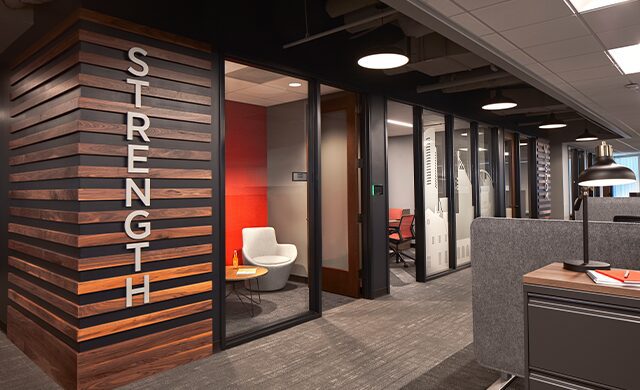
The regional office of Caliburn in Atlanta embraces a vibrant design style from Hendrick
Photography by Ryan McDonald, Eric Laignel, Garrett Rowloand, Brian Mihealsick, Michael Vogel, and Brian Gassel
This article originally appeared in HD’s July 2020 issue.

